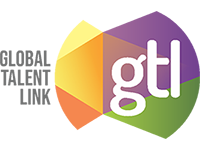Dangerous Mindsets
Social media platforms such as Instagram and Twitter continue to serve as powerful mediums for sharing information, personal passions, business ventures, and enjoyable content. Through the past decade, social media has become an integral part of modern society and an indispensable tool for self-promotion. Internet engagement creates new opportunities for today’s youth while simultaneously opening them up to the harmful content for their mental health. Exposure to content centered around physical appearances, lavish lifestyles, and extreme productivity makes today’s youth susceptible to great pressure at an impressionable age.
According to Dr. Betul Keles’ article titled ‘A systematic review: the influence of social media on depression, anxiety and psychological distress in adolescents’ she states that, “depression and anxiety have adverse consequences on adolescent development, including lower educational attainment, school dropout, impaired social relationships, and increased risk of substance abuse, mental health problems and suicide.”[1] Subconsciously comparing oneself to other social media users becomes second nature and feelings of inadequacy impair one’s self-confidence. One of the many ways students experience heavy pressure due to social media is by constantly seeing academic and professional productivity in which a virtual ‘productivity competition’ arises and those expectations impact one’s motivations.
Pros and Cons
Social media resembles a ‘double-edged sword’ in that it both serves as a source of negative mental health situations as well as a source of comfort. Studies show the benefits of enabling people to express their thoughts and feelings, and to receive social support. According to research by Dr. Niall McCrae of King’s London college there was a statistically significant relationship between social media use and depressive symptoms in children and adolescents.[2] Likewise, according to the report published by the American Academy of Pediatrics, social media allows adolescent users to strengthen bonds with existing friends and create more friendships through online platforms, therefore reducing feelings of isolation and loneliness while indirectly improving their mental health. [3]
Finding a Healthy Balance
Adolescence is the period of personal and social identity development, and now at an impressionable age a significant amount of this development is influenced by social media. Fully establishing self-regulation as a young student is largely unrealistic, therefore finding a healthy balance between social media use and off-screen time with a collection of daily habits cultivates organic discipline. Scheduling time after school and completing assignments to use platforms such as Instagram, Twitter, and Tik Tok for one to two hours will maintain both productivity and personal enjoyment of these apps. Another valuable habit is to set an alarm thirty minutes before going to sleep telling you to close the apps for a relaxing night’s rest rather than using social media until you tire yourself out. These time limits do not focus on completely avoiding social media given that these serve as convenient distractions for a brief period of time. The goal of scheduling social media use is to manage daily priorities such as sleep, tasks, assignments, and personal time. Adolescents confronting comparisons between themselves and their peers is an unfortunate result of modern technology, however asserting self-worth based on virtues, talents, and personal growth through a simple routine strengthens all of our mental health.
Join GTL’s Learning Community!
